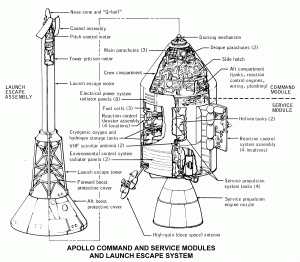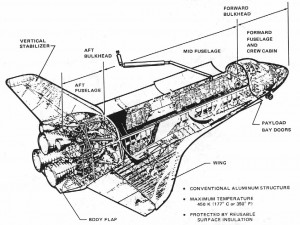The Apollo spacecraft and space shuttle (pictured) epitomized the space travel technology of their day. The next generation of American spacecraft to carry people into orbit will include numerous features and functions built with the most advanced techniques the aerospace industry has devised. If you were building your own spacecraft, what modern-day technologies would you incorporate?
12 thoughts on “What Would You Add to the Next American Spacecraft?”
Comments are closed.



Altitude compensation such as aerospikes. Can increase payload 100% for single stage to orbit and 25% for two stage to orbit.
Bob Clark
Modular propulsion system for deep-space testing and possible exploration. As many modern materials-recycling systems as possible (for further deployment on ground). Power generation for use beyond our Sun’s intensity range. Let’s start thinking beyond our Solar System. Humankind will someday need another, younger planet and star.
Aerospikes are a great idea. A lifting body or winged spacecraft. Some kind of version or variation on the X-33. No more parachutes, except maybe in an emergency. Room for 7 at least, maybe a flight attendant (haha).
Hd camera system..
With Houston controlled data link.
So the astronauts can get on with their tasks without being interrupted.
That way get to see what’s going on and maybe get involved, via app or pc program.So we can all feel a part of what’s going on.
This was a great suggestion that is actually in work already! The SpaceX-3 cargo mission to the International Space Station is carrying the High Definition Earth Viewing (HDEV) investigation. It places four commercially available HD cameras on the exterior of the space station and uses them to stream live video of Earth for viewing online. The cameras are enclosed in a temperature specific housing and are exposed to the harsh radiation of space. Analysis of the effect of space on the video quality, over the time HDEV is operational, may help engineers decide which cameras are the best types to use on future missions. High school students helped design some of the cameras’ components, through the High Schools United with NASA to Create Hardware (HUNCH) program, and student teams operate the experiment. There’s a whole web page devoted to the HDEV project: https://www.nasa.gov/mission_pages/station/research/experiments/917.html
Gummy bears.
How about astronauts? That was for laughs, but seriously how about some tablets (and e-readers) and a link to the ground via a wireless connection?
Unrestricted view special visor display unit that is capable of seeing through the vehicle structures to ease missions magnetic propulsion and a suit with smart material to sense how the body moves in micro gravity suit aid it better suit design
Self healing materials for space operation such as ceramic tiles glass ceramic windows a special shower suit that has vaporised water flowing and then collecting due to a convection effect their would be no need for a pump just an inlet and out let bags would be cheap to manufacture
Money. That’s what I would add. More money. No more Nasa’s budget cuts, please!
Modular propulsion system for deep-space testing and possible exploration. As many modern materials-recycling systems as possible (for further deployment on ground). Power generation for use beyond our Sun’s intensity range. Let’s start thinking beyond our Solar System. Humankind will someday need another, younger planet and star.
Those are some great ideas, everyone! Some of these touches already are being considered by our partners as they finalize their plans to build a safe, reliable and cost-effective spacecraft, as well as by NASA for its own deep-space exploration vehicle, Orion.